Are you curious about the affectionate personality of Persian cats? Well, you’ve come to the right place! Persian cats are known for their sweet and loving nature, making them wonderful companions. In this article, we’ll delve into the characteristics that make Persian cats so affectionate and why they make great pets for those seeking a loving feline friend. If you’re a Persian cat enthusiast or simply intrigued by their personality, stay tuned for more in-depth information and insights in the upcoming paragraphs!
Persian cats have a reputation for being cuddly and loving, and there’s a good reason for it. These delightful felines thrive on human companionship and attention. They are known to be gentle, docile, and enjoy being around their owners. This affectionate nature is influenced by their genetics, as Persian cats have been selectively bred over many years to exhibit these traits. Their calm demeanor and eagerness to bond make them highly suitable pets for families and individuals looking for a loving and devoted companion.
If you want to know more about the endearing traits and habits of Persian cats, make sure to read our upcoming articles. We will dive deeper into their behavior, their social nature, and tips on cultivating a strong bond with your Persian cat. Additionally, we’ll address common questions people have about Persian cats and provide you with answers that will help you better understand these lovable felines. Stay tuned for more captivating insights into the affectionate world of Persian cats!
Persian Cats and Their Affectionate Personality
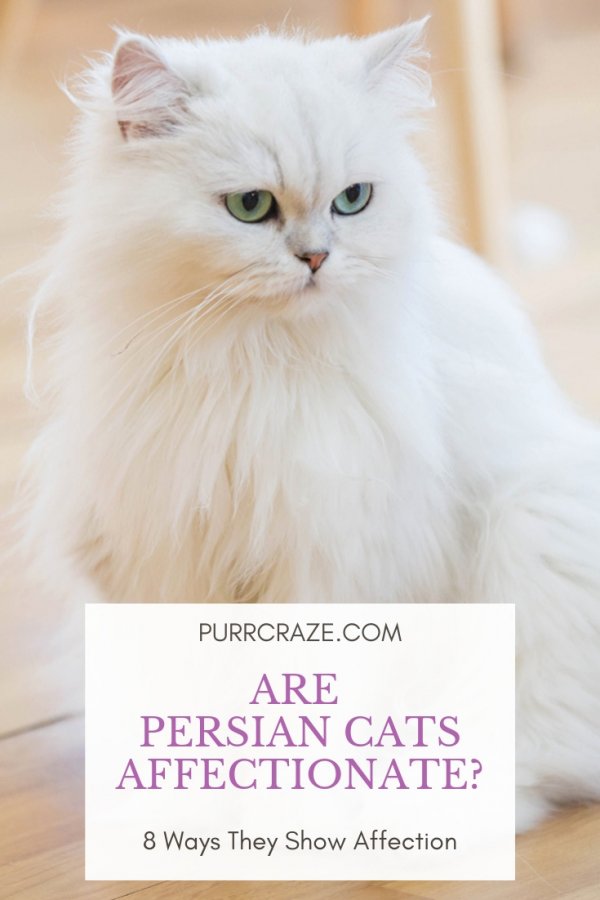
Origin and History
Ancient Origins of Persian Cats
Persian cats have a rich history that dates back to ancient times. They are believed to have originated in Persia, which is now modern-day Iran. The exact origins of these majestic felines are shrouded in mystery, but it is widely believed that they were first discovered in the high plateaus of Iran.
The Persian Cat’s Journey through History
Throughout history, Persian cats have been highly prized for their beauty and sought after by royalty and nobility. These regal creatures were often seen adorning the palaces of kings and queens. They were esteemed for their luxurious and silky coats, captivating large eyes, and distinctive facial features.
Famous Persian Cats in History
One of the most famous Persian cats in history is Chico, who belonged to the British painter Sir Edwin Landseer in the 19th century. Chico became a favorite subject in Landseer’s paintings, immortalizing his elegance and charm. Another notable Persian cat is Pinky, the beloved pet of the famous writer Mark Twain. Pinky was known for his playful antics and affectionate nature.
Physical Characteristics
Distinct Features of Persian Cats
Persian cats are easily recognizable due to their unique physical characteristics. They have stocky bodies, short legs, and a round face. Their most striking feature is their long, flowing coat, which requires regular grooming to maintain its beauty. Persian cats also have large, expressive eyes that range in color from blue to copper.
Variations in Coat Colors and Patterns
Persian cats come in a wide variety of coat colors and patterns. Some of the most common colors include white, black, cream, chocolate, and blue. Their coats can also have patterns such as tabby, tortoiseshell, and calico. Each Persian cat’s coat is unique, adding to their individual beauty and charm.
Body Structure and Size of Persian Cats
Persian cats have a sturdy and medium-sized body. They typically weigh between 7 to 12 pounds, with males being slightly larger than females. Despite their stocky appearance, Persian cats are graceful and move with an air of elegance. Their short legs and round paws contribute to their overall balance and agility.
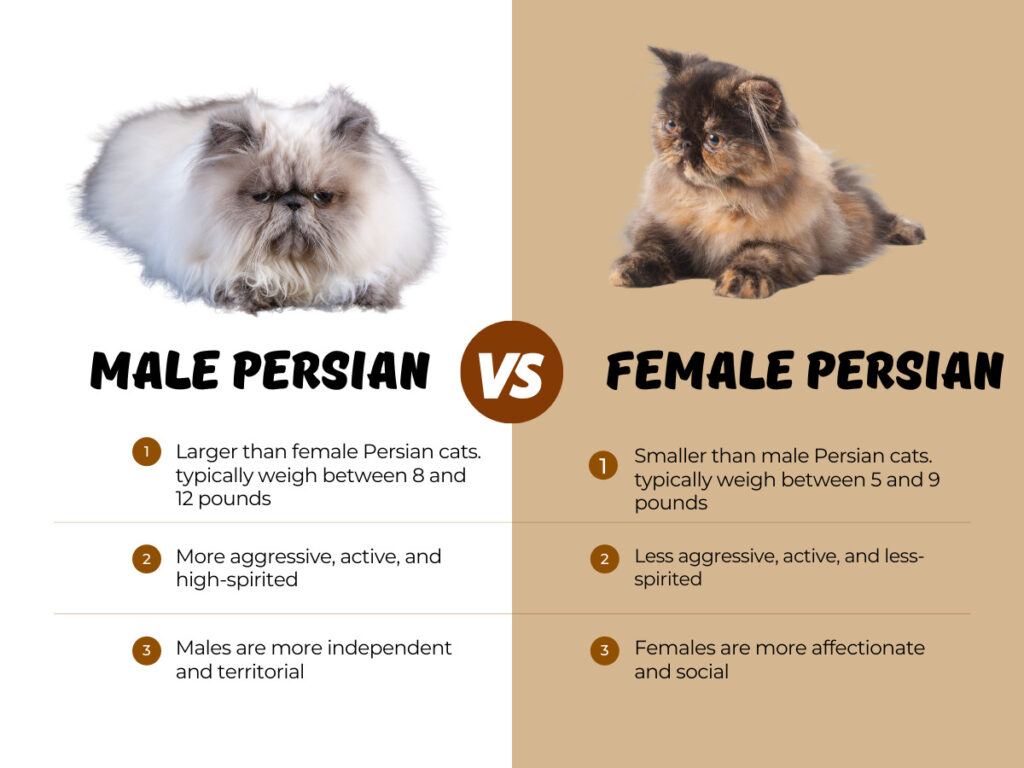
Temperament and Personality
Affectionate Nature of Persian Cats
Persian cats are renowned for their affectionate and calm nature. They thrive on human companionship and are often called “lap cats” because of their love for snuggling and cuddling with their owners. They enjoy being petted and pampered, and will often purr contentedly when receiving attention.
Behavioral Traits of Persian Cats
Persian cats have a gentle and laid-back temperament, making them ideal companions for individuals or families seeking a calm and tranquil pet. They are generally quiet and do not engage in loud or excessive vocalizations. Persian cats also have a strong sense of loyalty towards their owners and can form deep bonds with them.
Interactions with Humans and Other Pets
Persian cats are highly sociable and enjoy the company of their human family members. They are known to be tolerant and patient with children, making them great pets for families with kids. Persian cats can also get along well with other pets if introduced properly and given enough time to adjust to their presence.
Grooming and Maintenance
Long-Haired Coat Care for Persian Cats
One of the defining features of Persian cats is their long and luxurious coat. However, this beautiful coat requires regular grooming to prevent matting and tangles. It is recommended to brush a Persian cat’s coat at least once a day using a high-quality cat brush with wide teeth to remove any loose fur and maintain its silky texture.
Recommended Grooming Tools and Techniques
In addition to daily brushing, Persian cats also benefit from regular baths to keep their coat clean and free from dirt and oils. It is important to use cat-specific shampoos and conditioners that are gentle and safe for their sensitive skin. Trimming their nails and cleaning their ears also forms an essential part of their grooming routine.
Preventing Health Issues through Proper Grooming
Regular grooming not only helps to keep a Persian cat’s coat looking beautiful but also plays a crucial role in preventing certain health issues. By removing loose fur and preventing matting, grooming helps to reduce the risk of hairballs and skin irritations. Additionally, routine grooming sessions allow for thorough inspections, ensuring any potential health concerns are detected early.
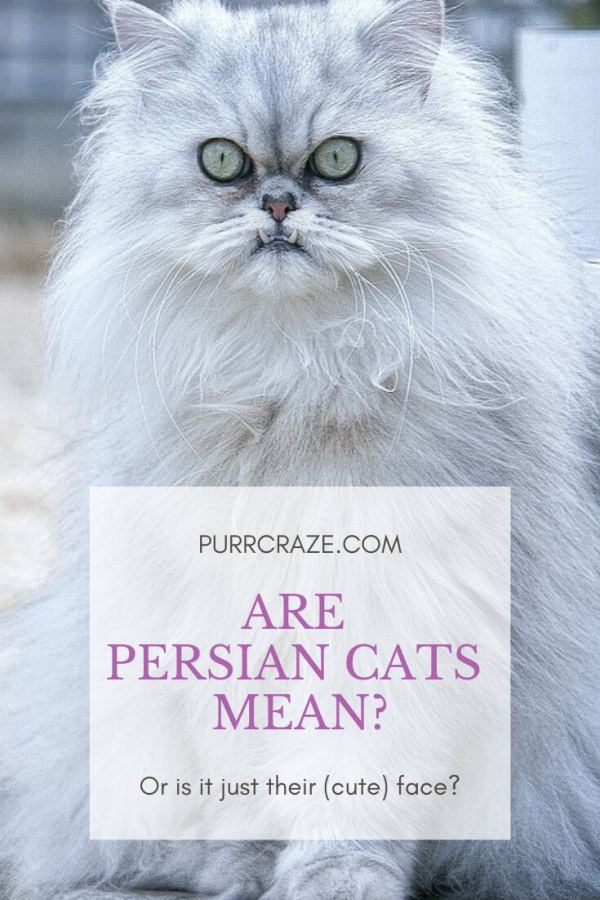
Nutrition and Feeding
Unique Dietary Requirements of Persian Cats
Due to their distinct body structure and coat characteristics, Persian cats have unique dietary requirements. They require a well-balanced diet that is rich in protein and essential vitamins and minerals to support their overall health and maintain the quality of their coat. It is important to provide them with high-quality cat food specifically formulated for their breed.
Balanced and Healthy Meal Plans for Persians
Feeding Persian cats a balanced and healthy meal plan is vital to their well-being. Their diet should consist of a combination of wet and dry cat food to ensure they receive adequate hydration and nutrients. It is important to follow the feeding guidelines provided by the cat food manufacturer and consult with a veterinarian for personalized dietary recommendations.
Potential Food Allergies and Sensitivities
Some Persian cats may develop food allergies or sensitivities, causing digestive issues or skin problems. Common allergens can include certain proteins, grains, or additives commonly found in cat food. It is essential to monitor their reactions to different foods and consult with a veterinarian if any allergies or sensitivities are suspected. A specialized hypoallergenic diet may be recommended in such cases.
Health and Well-being
Common Health Problems Faced by Persian Cats
While Persian cats are generally healthy, they can be prone to certain health issues due to their genetic makeup and physical characteristics. Some of the common health problems faced by Persian cats include respiratory problems, eye conditions, dental issues, and polycystic kidney disease (PKD). Regular veterinary check-ups and screenings are crucial for early detection and treatment of any health concerns.
Regular Veterinary Check-ups and Vaccinations
To ensure the overall health and well-being of Persian cats, regular veterinary check-ups are essential. Vaccinations, parasite prevention, dental cleanings, and general health screenings should be part of their routine veterinary care. By staying proactive and preventative, potential health issues can be addressed in a timely manner.
Exercise and Mental Stimulation for Overall Well-being
While Persian cats are not as active as some other cat breeds, they still require regular exercise and mental stimulation to maintain their overall well-being. Providing interactive toys, scratching posts, and puzzle feeders can help keep them mentally engaged. Short play sessions and gentle exercises, such as chasing a feather toy or batting a ball, can also help keep them physically active.
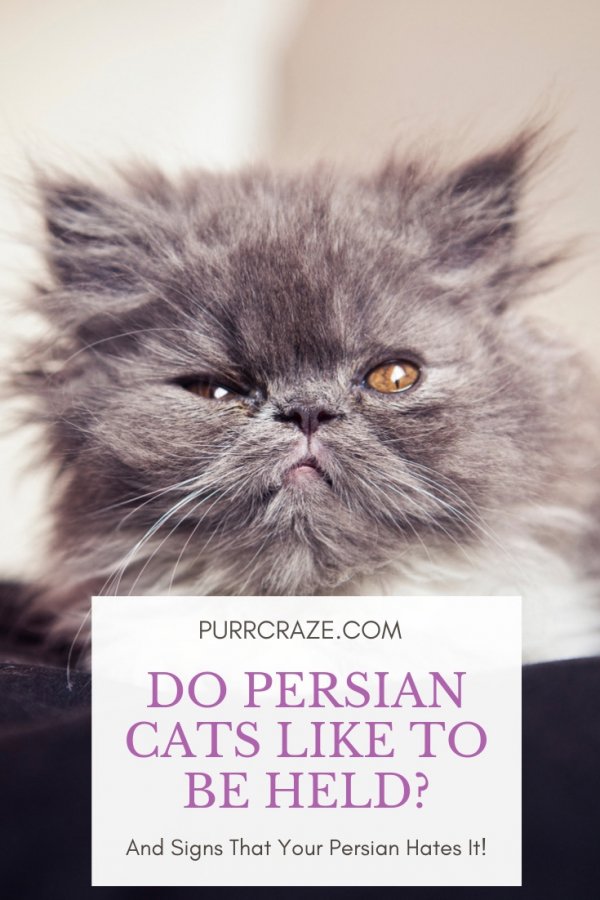
Training and Socialization
Effective Training Methods for Persian Cats
Persian cats are intelligent and eager to please, making them trainable with the right methods. Positive reinforcement techniques, such as treats and praise, work well when teaching them basic obedience commands or tricks. It is important to be patient, consistent, and gentle during training sessions, as Persian cats respond best to a calm and nurturing environment.
Introducing Persian Cats to New Environments
When introducing a Persian cat to a new environment, it is important to provide them with a safe and comfortable space where they can gradually explore and adjust. It is recommended to introduce them to different rooms gradually, allowing them to become familiar with their new surroundings at their own pace. Offering treats, toys, and familiar scents can help ease their transition.
Socializing Persian Cats from a Young Age
Socialization plays a crucial role in shaping a Persian cat’s behavior and temperament. Exposing them to various people, environments, and experiences from a young age helps them become well-adjusted and confident adults. Introducing them to different sounds, sights, and handling can help prevent fear or anxiety in new situations.
Living Environment
Creating a Cat-Friendly Home for Persian Cats
Creating a cat-friendly environment is essential for the well-being of Persian cats. Providing them with comfortable resting areas, such as cozy cat beds or plush cushions, allows them to relax and retreat when needed. Scratching posts and cat trees are also important, as they help fulfill their natural instinct to scratch and climb.
Indoor Vs. Outdoor Living for Persians
Persian cats are best suited for indoor living due to their long coats and gentle nature. They are not as adept at defending themselves against potential dangers or predators. However, it is important to provide them with opportunities for supervised outdoor exploration in a secure and controlled environment, such as an enclosed backyard or a catio.
Providing Enrichment and Play areas
Enrichment and play areas are essential for the mental stimulation and overall happiness of Persian cats. Offering a variety of toys, such as interactive puzzle toys and feather wands, can help keep them engaged and entertained. Creating climbing areas and providing window perches also allows them to fulfill their innate curiosity and enjoy the outside world from a safe vantage point.
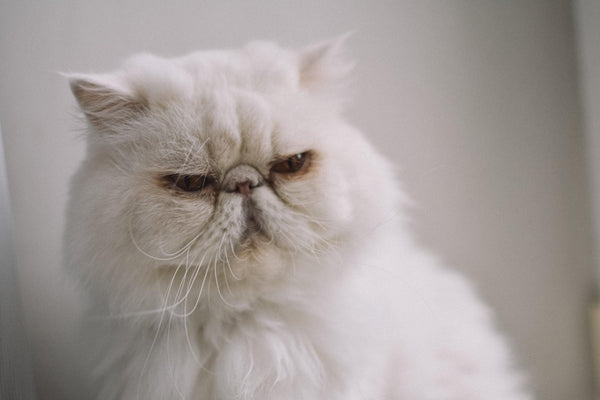
Breeding and Caring for Kittens
Responsible Breeding Practices for Persian Cats
Responsible breeding practices are vital when it comes to preserving the health and well-being of Persian cats. It is important to work with reputable breeders who prioritize the welfare of the cats and adhere to strict breeding standards. Breeding should focus on improving the breed’s genetic health and maintaining the desired physical characteristics.
Preparing for the Arrival of Persian Kittens
Preparing for the arrival of Persian kittens involves creating a safe and comfortable nursery for the newborns. Providing a warm and quiet space, complete with a nesting box and bedding, ensures a cozy and secure environment. It is also important to stock up on essential supplies, such as kitten formula, feeding bottles, and a digital scale for monitoring their growth.
Caring for Newborns and Ensuring their Health
Caring for newborn Persian kittens requires attention to their feeding, hygiene, and overall health. During the first few weeks, they rely on their mother’s milk for nourishment. If the mother is unable to nurse, bottle-feeding with a kitten milk replacement formula is necessary. Regular weight monitoring, keeping them warm, and ensuring a clean and sanitized environment are essential for their well-being.
Famous Persian Cat Personalities
Iconic Persian Cats in Pop Culture
Persian cats have made appearances in various forms of popular culture. One iconic example is “Sassy” from the movie “Homeward Bound: The Incredible Journey.” Sassy, voiced by Sally Field, was a sassy and adventurous Persian cat who embarked on an extraordinary journey with her fellow animal companions. Her character helped portray the unique personality traits of Persian cats to a wider audience.
Celebrity Owners and their Beloved Persians
Many celebrities have fallen in love with Persian cats and become proud owners of these majestic felines. Taylor Swift is known for her love of cats and has shared numerous photos and videos of her Persian cats, Olivia Benson and Meredith Grey, on social media. Other famous Persian cat owners include Karl Lagerfeld, Mariah Carey, and Katy Perry.
Persian Cats in Literature and Art
Persian cats have been featured in various works of literature and art throughout history. T.S. Eliot’s famous poetry collection “Old Possum’s Book of Practical Cats” includes a poem titled “Growltiger’s Last Stand,” which features a Persian cat character. Persian cats have also been depicted in paintings and sculptures, often symbolizing beauty, elegance, and grace.
Persian Cats in Different Cultures
Persian Cats in Persian Culture and History
In Persian culture and history, Persian cats hold a special place. They are seen as a symbol of luxury, beauty, and grace. Persian literature and poetry often reference Persian cats, praising their regal qualities and captivating appearance. These magnificent felines are treasured as national treasures and their popularity extends far beyond their native country.
Symbolism and Superstitions Surrounding Persian Cats
In different cultures around the world, Persian cats have acquired symbolic meaning and superstitions. In some cultures, they are believed to bring good luck and fortune, while in others, they are associated with mysticism and spirituality. These beliefs stem from their captivating appearance and the aura of elegance and grace that they exude.
Persian Cats in Other World Cultures
Persian cats have also made their mark in other cultures around the world. They are highly regarded and valued in many countries for their beauty and distinct characteristics. From Japan to the United States, these Persian cats have found their way into the hearts and homes of cat lovers everywhere.
Persian Cats and Human Allergies
Understanding Allergies to Persian Cats
While Persian cats are known for their affectionate personality and beauty, they can be a source of allergies for some individuals. The allergen responsible for these allergies is a protein found in their saliva, urine, and dander. When these allergens come into contact with sensitive individuals, they can trigger allergic reactions.
Managing Allergies without Giving Up your Persian
If you or a family member is allergic to Persian cats but still wish to keep one as a pet, there are strategies to manage allergies effectively. Regular grooming and cleaning of your cat’s environment can help minimize allergen exposure. Using air purifiers, keeping your home clean and well-ventilated, and designating certain areas as cat-free zones can also help reduce allergen levels.
Hypoallergenic Persian Cat Breeds
For individuals with severe allergies, hypoallergenic Persian cat breeds may be a suitable option. These breeds produce fewer allergens, making them less likely to trigger allergic reactions. Some hypoallergenic Persian cat breeds include the Balinese, Siberian, and Russian Blue. However, it is important to note that individual allergic reactions can vary, and it is best to spend time with the specific cat breed before making a decision.
Traveling with Persian Cats
Tips for Safe and Stress-Free Traveling with Persians
Traveling with Persian cats requires careful planning and consideration to ensure their safety and well-being. It is important to acclimate them to travel carriers well in advance and make them comfortable with short trips to reduce anxiety. Packing essential supplies, such as food, water, litter, and familiar bedding, is crucial for a smooth travel experience.
Preparing for Air Travel with Persian Cats
If you plan to travel by air with your Persian cat, there are additional steps to consider. Research the airline’s specific pet travel policies and requirements, including the necessary documentation and carrier specifications. It is important to consult with a veterinarian and ensure your cat is up to date on vaccinations and microchipped before air travel.
Road Trips and Accommodations for Persians
For road trips with Persian cats, it is important to plan for regular breaks and provide a safe and comfortable environment. Ensure proper ventilation in the car and secure the travel carrier to prevent accidents. When booking accommodations, look for pet-friendly hotels or consider renting a pet-friendly vacation home to provide a stress-free stay for both you and your feline companion.
Conclusion
Appreciating the Affectionate Nature of Persian Cats
Persian cats are truly remarkable creatures with their affectionate nature and regal presence. Their silky coats, expressive eyes, and gentle temperament make them a beloved breed among cat enthusiasts worldwide. Whether purring on your lap, playing with toys, or simply providing a calming presence, Persian cats are loyal companions who bring joy and love into the lives of their owners.
Building a Strong Bond with Your Persian Companion
To build a strong bond with your Persian cat, it is important to provide them with love, attention, and the care they need. Regular grooming sessions, playtime, and interactive activities help strengthen your connection and create a sense of trust. By understanding their unique personality traits and meeting their specific needs, you can forge a deep and lasting bond with your Persian companion.
Embracing the Joy of Owning a Persian Cat
Owning a Persian cat is a rewarding experience that brings immense joy and happiness. Their affectionate nature, beauty, and elegance make them a cherished member of any family. From their ancient origins to their role in art and literature, Persian cats hold a special place in history and culture. Embrace the joy of owning a Persian cat and revel in the love and companionship they bring to your life.
10 Frequently Asked Questions about Persian Cats:
-
Are Persian cats low-maintenance in terms of grooming?
- While Persian cats have a long coat that requires regular grooming, they are generally low-maintenance in terms of exercise and grooming tools.
-
Can Persian cats live in apartments?
- Yes, Persian cats can adapt well to apartment living as long as they are provided with enough mental stimulation and space to move around.
-
How often should I groom my Persian cat’s coat?
- It is recommended to groom a Persian cat’s coat at least once a day to prevent matting and tangles.
-
Are Persian cats prone to health problems?
- Persian cats can be prone to certain health problems, such as respiratory issues and eye conditions. Regular veterinary check-ups are essential for early detection and treatment.
-
Can I train a Persian cat to do tricks?
- Persian cats are intelligent and trainable. With patience and positive reinforcement, they can learn basic obedience commands and even some tricks.
-
Are Persian cats good with children?
- Persian cats are generally good with children and can be gentle and patient. However, it is important to supervise interactions to ensure the safety of both the cat and the child.
-
Can Persian cats be left alone for long periods?
- Persian cats thrive on human companionship and may become lonely if left alone for long periods. It is important to provide them with appropriate mental stimulation and social interaction.
-
Are Persian cats hypoallergenic?
- Certain Persian cat breeds, such as the Balinese and Russian Blue, are considered hypoallergenic. However, individual allergies may still vary, and it is best to spend time with the specific breed before making a decision.
-
How do I introduce a Persian cat to a new environment?
- When introducing a Persian cat to a new environment, it is important to provide them with a safe and comfortable space where they can gradually explore and adjust.
-
What is the lifespan of a Persian cat?
- Persian cats have an average lifespan of 12 to 16 years, although with proper care and a healthy lifestyle, some can live even longer.